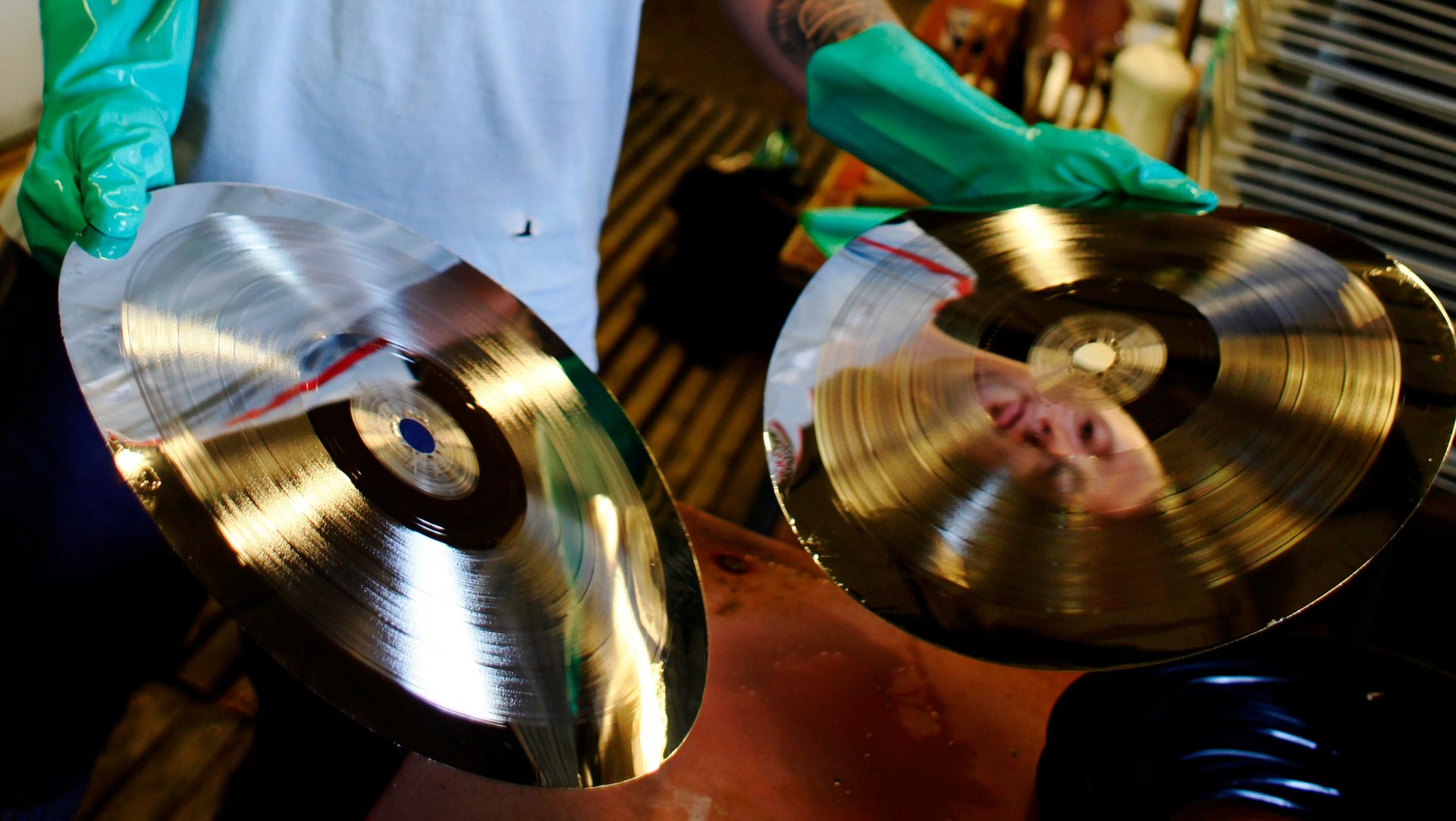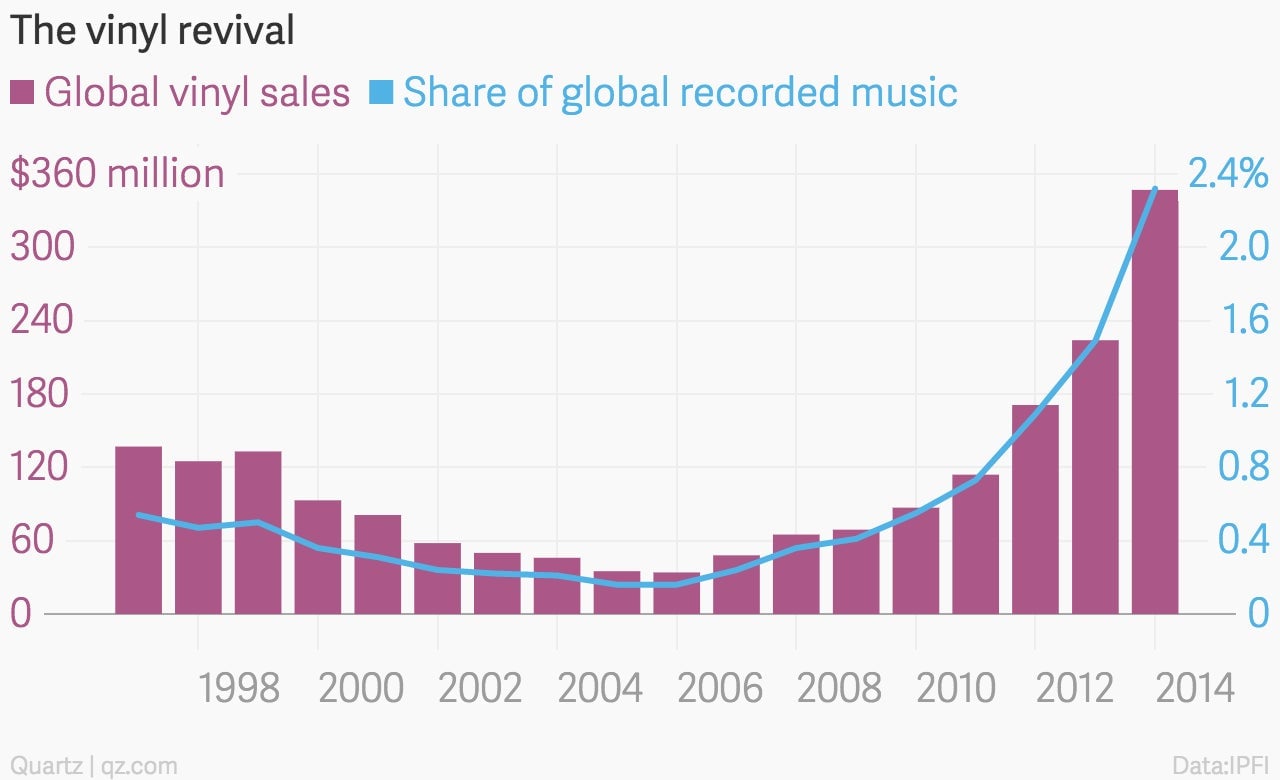Vinyl is having its best year since 1985. Shame no one is listening to the records
Vinyl’s still got something up its sleeve.


Vinyl’s still got something up its sleeve.
According to a new report last week from the Recording Industry Association of America, the US music business saw its first double-digit growth in almost 20 years in 2016. Leading that boom, of course, were on-demand streaming services, and particularly paid ones like Apple Music and Spotify’s subscription tier. The US music industry overall brought in $7.65 billion in revenue, and streaming pulled in a hefty 68%—or $3.93 billion—of that.
But there was another, less expected bit of information out of the report: the steady success of vinyl records.
Per the RIAA, vinyl album sales in the US rose to $430 million last year, and comprised 26% of total physical music shipments—their highest share since 1985.
Considering that sales of physical CDs around the world are plunging lower and lower each year, that may not sound like much of a milestone; vinyl’s sales are also not enough to significantly bolster the struggling industry as a whole. Yet the fact that vinyl is still trending upward—its sales going the exact opposite direction of CDs, which are now completely out of style—speaks to the surprising staying power of the platform and suggests its global resurgence is not over yet.

A survey last year, though, found that many vinyl buyers don’t actually play their purchases or own turntables. So those records sitting untouched in the living room of hipsters all over America are most likely an expression of identity—of belonging to a particular generation, culture, and sound. ”Music used to be a commitment,” says Taylor Jackson, operations director at Skylinyl, a design company that makes artwork out of repurposed LPs. “It was something you searched for, hunted for. It didn’t just show up at your doorstep. Vinyl is about a gritty sound and sitting down to have this experiential moment.”
Even stars like Elton John are getting into the business with custom vinyl delivery programs to which super-fans can subscribe.
Of course, the status quo in music never stays the same for long; vinyl may have been able to surge into cultural relevance these past years, but data from the RIAA and Nielsen show there’s a chance it’s starting to plateau, at least in the US. After 38% average annual growth from 2012 to 2015, vinyl revenue only grew 3.5% in 2016.
And, as for actually listening to music, all reports indicate that the the world overwhelmingly favors streaming.